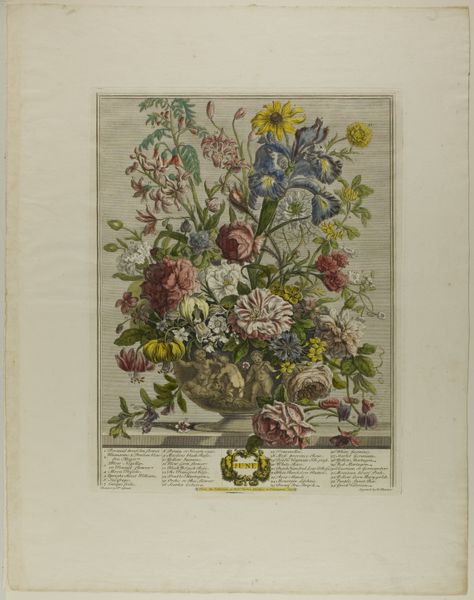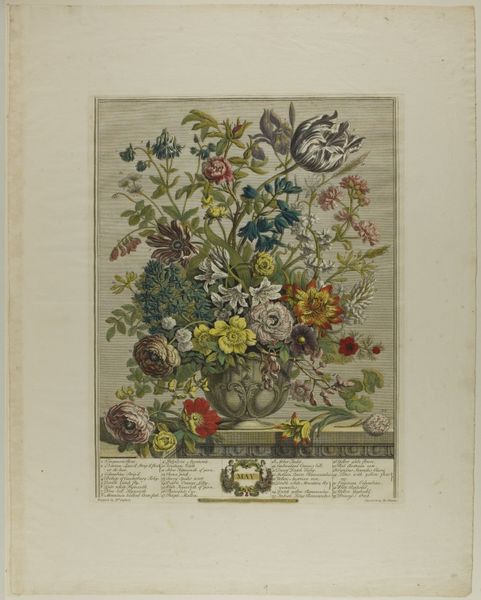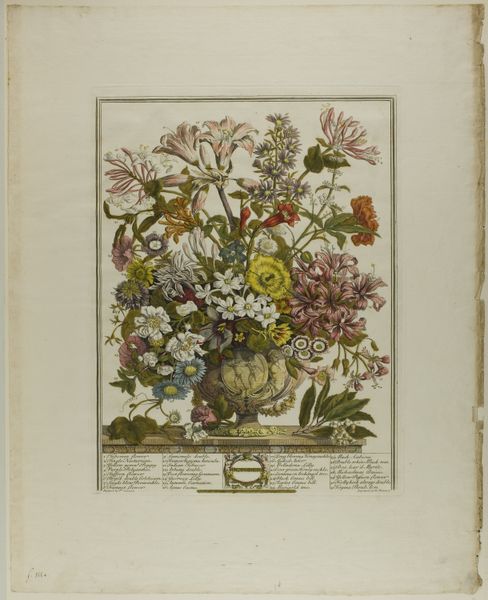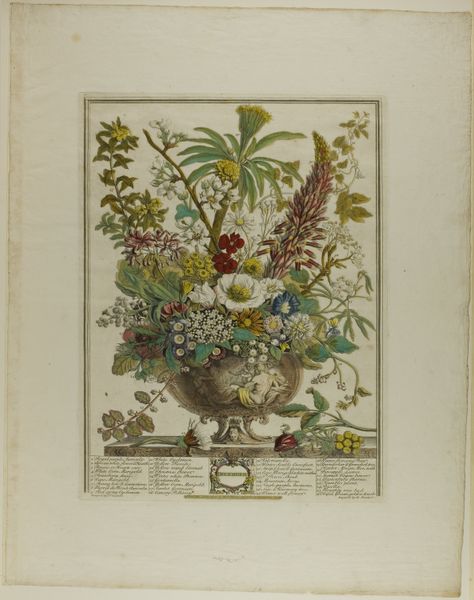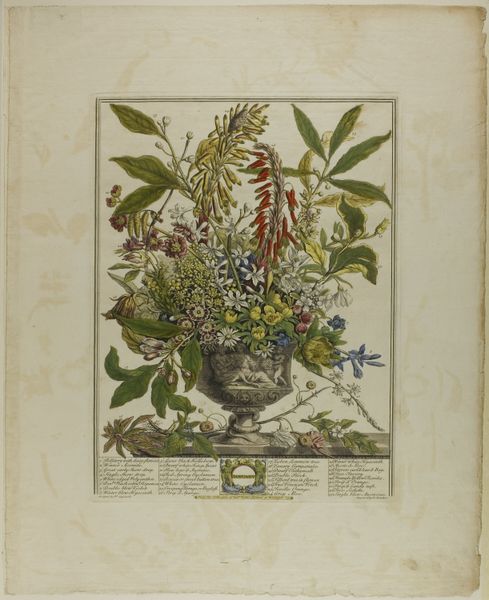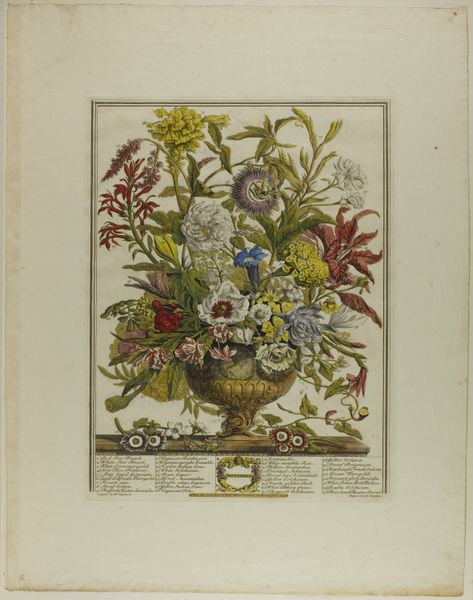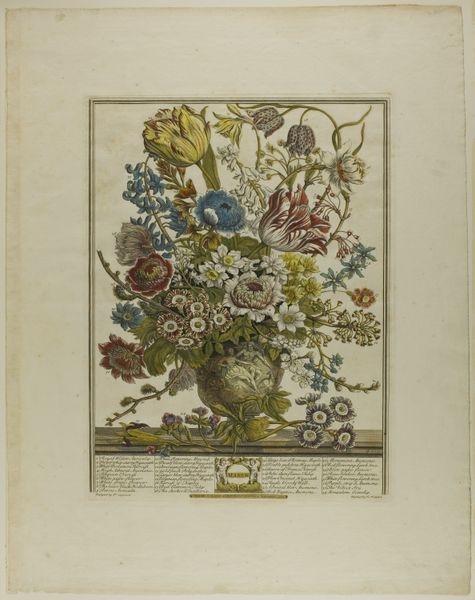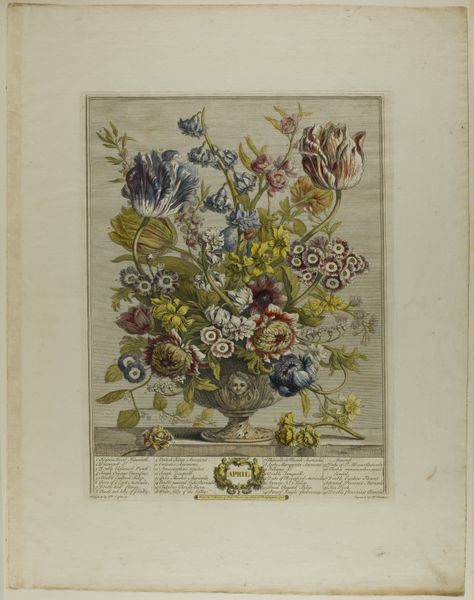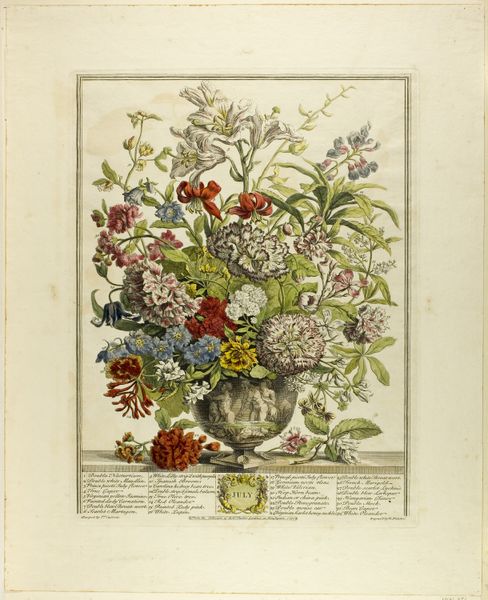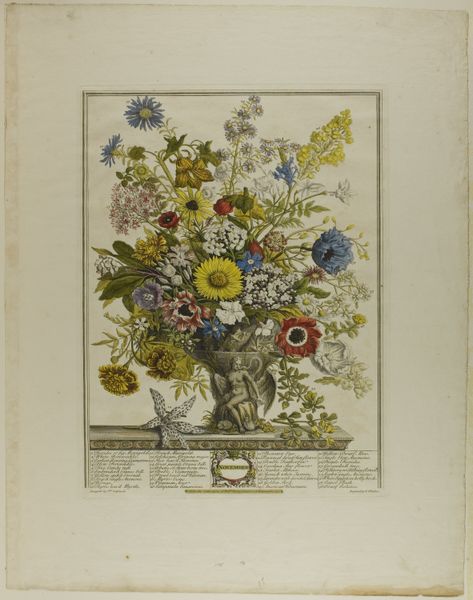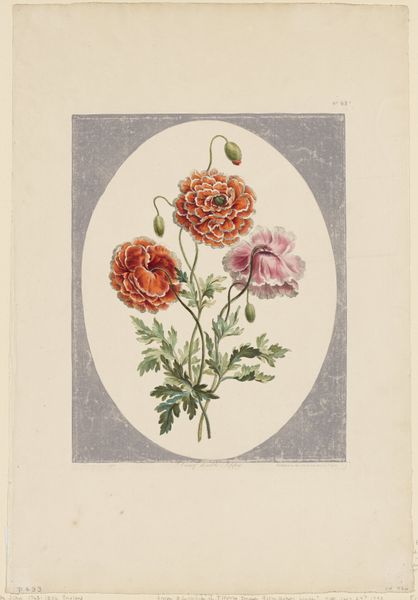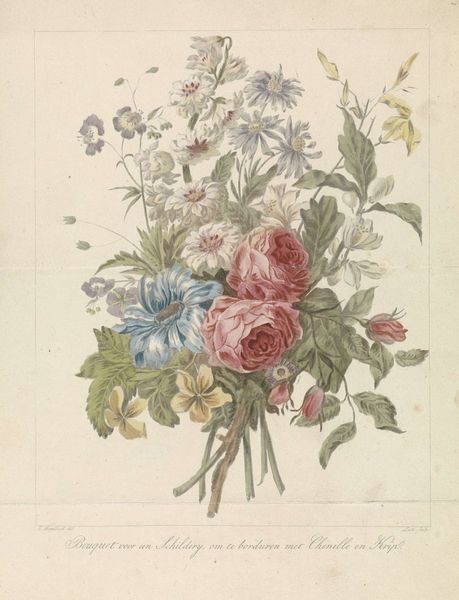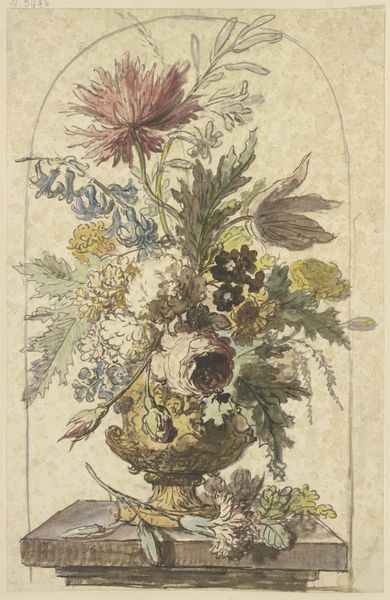
drawing, print, etching, paper, watercolor
#
drawing
#
water colours
# print
#
etching
#
paper
#
watercolor
#
genre-painting
#
history-painting
#
decorative-art
#
watercolor
Dimensions: 405 × 305 mm (image); 600 × 465 mm (sheet)
Copyright: Public Domain
Editor: So, this is "February, from Twelve Months of Flowers," it's an etching and watercolor on paper, and we don't have a precise date, just "n.d." attributed to Henry Fletcher. It’s strikingly detailed! All these flowers in the dead of winter… it almost feels like a hopeful defiance of nature. What speaks to you in this composition? Curator: I'm drawn to how the artist uses floral symbolism. Each bloom isn't merely decorative; they’re loaded with cultural meaning. February, poised between winter's starkness and spring’s promise, becomes a canvas for aspirations. Think about the symbolic language of flowers from this period: Do you see a connection between these specific flowers and the desires, hopes, or anxieties of the time? Editor: I hadn’t considered that! I just saw pretty flowers. The tulip is eye-catching; were those valuable then? I know people went crazy over them at some point. Curator: Exactly! The tulip, depending on its variety and rarity, signaled wealth and status, a nod to worldly aspirations even in a simple print. But notice, too, the presence of, say, snowdrops, often associated with hope and purity. It sets up a visual dialogue. Are we striving for material gain, spiritual purity, or a combination of both? It’s a cultural fingerprint. Editor: So it's not just a pretty picture, it’s reflecting desires, class, all sorts of cultural values! Fascinating. I'll never look at flower paintings the same way again. Curator: Indeed. And how incredible to see the past through its symbolic language of visual artifacts!
Comments
No comments
Be the first to comment and join the conversation on the ultimate creative platform.
